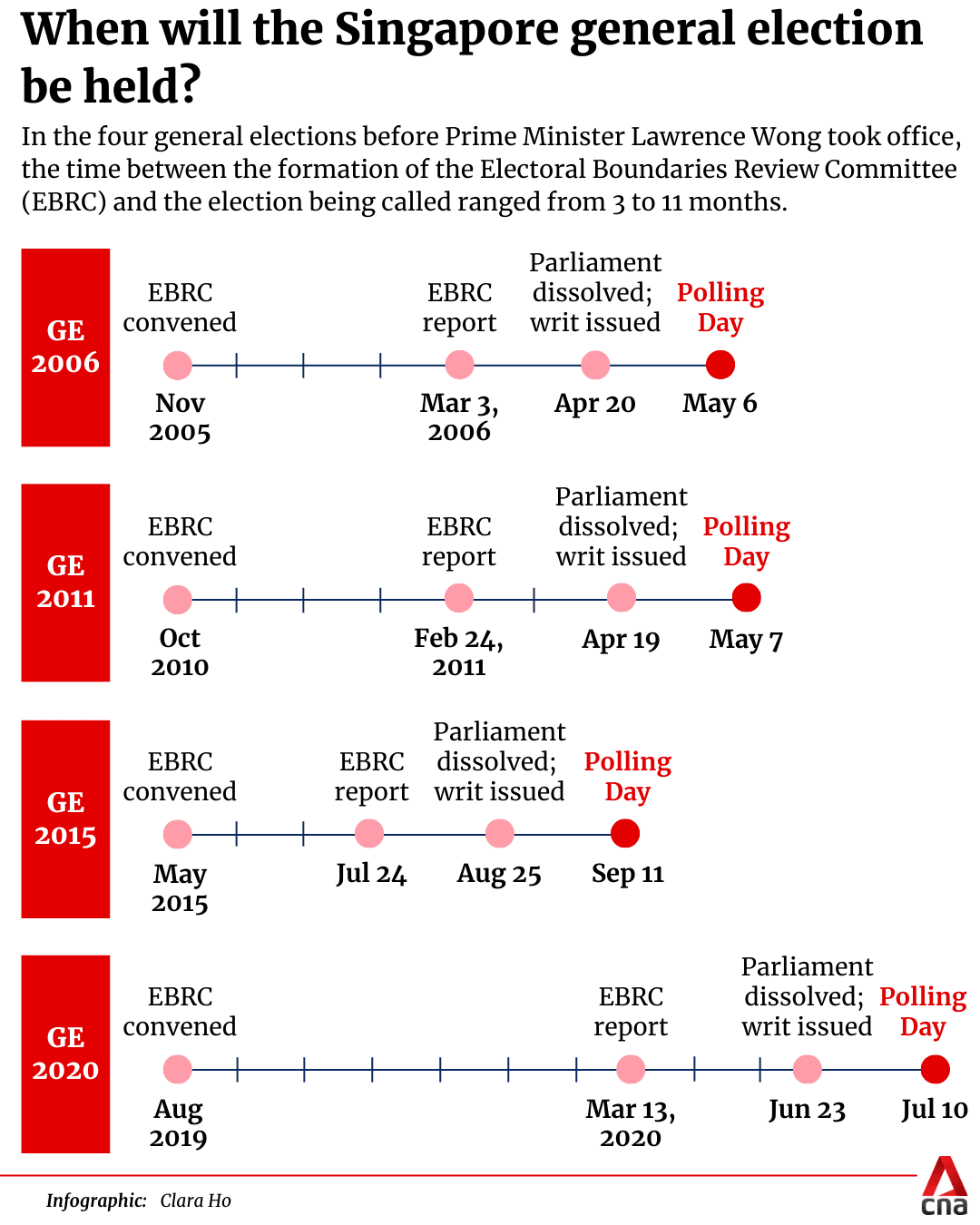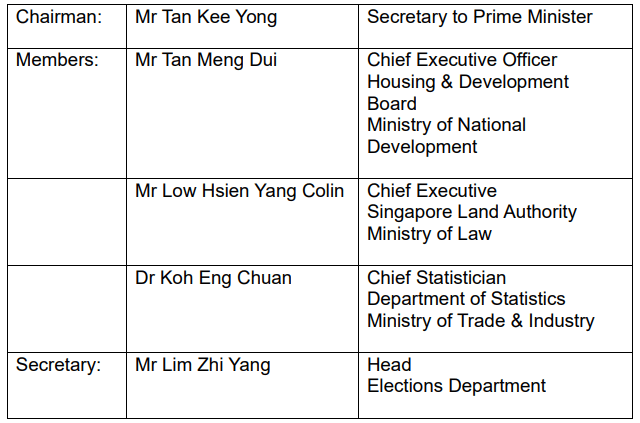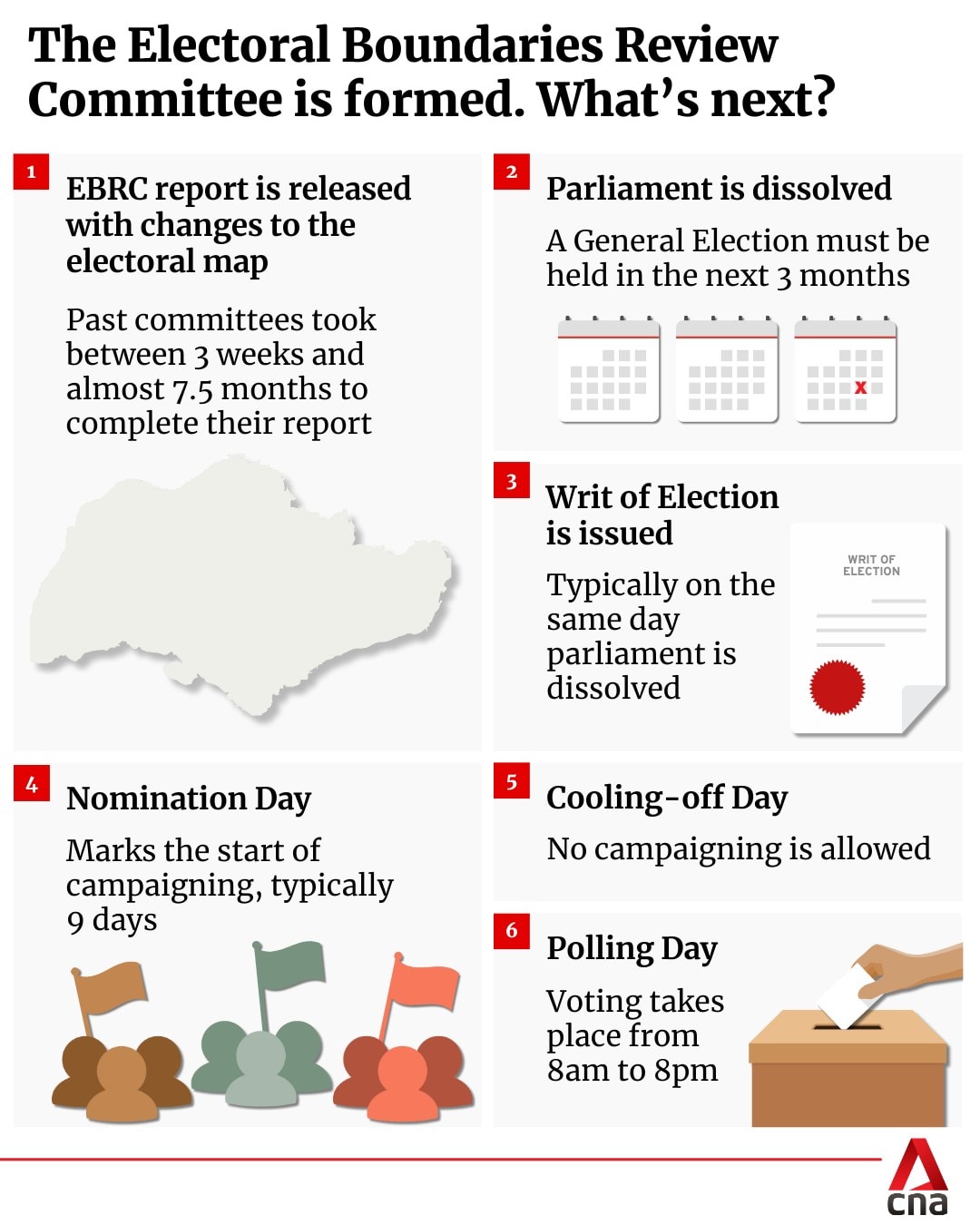Electoral boundaries committee formed in key step towards next Singapore General Election
In the four previous general elections, the gap between the committee’s formation and the election being called was between three and almost 11 months.

Singapore's Elections Department. (File photo: TODAY/Ili Nadhirah Mansor)

This audio is generated by an AI tool.
SINGAPORE: The Electoral Boundaries Review Committee (EBRC) has been formed, the Elections Department (ELD) said on Wednesday (Jan 22) - a significant step in the lead-up to the next general election which must be held by November.
The committee is convened by the prime minister ahead of every contest to review and make changes to Singapore’s electoral map, taking into account population shifts and housing developments to adjust the number of voters across electoral divisions.
In a media release on Wednesday, the ELD said the committee has been directed to recommend the number and size of Group Representation Constituencies (GRCs) and Single Member Constituencies (SMCs).
"The committee should seek to keep the average size of GRCs, the proportion of Members of Parliament (MPs) elected from SMCs, and the average ratio of electors to elected MPs, all at about the same as that in the last General Election," the ELD added.
The next general election will be Singapore’s 14th since independence, and the first under the country’s fourth-generation leadership led by Prime Minister Lawrence Wong.
Voter rolls will be open for inspection from February, and updates must be completed before Apr 1.
ELD will provide further details on how Singaporeans can check the voter rolls when they are open for public inspection.
NEXT GENERAL ELECTION IMMINENT
In the four contests called by Mr Wong’s predecessor Lee Hsien Loong - in 2006, 2011, 2015 and 2020 - the gap from the EBRC’s formation to the election being called ranged between three and almost 11 months.
The committee was last convened in August 2019, ahead of a general election in July the following year, held amid the COVID-19 pandemic.
In 2015, it was convened in May, with a September election held in what was Singapore’s Golden Jubilee year.

Chaired by the secretary to the prime minister, the EBRC comprises senior civil servants from the Housing and Development Board, Singapore Land Authority, Department of Statistics and ELD.
In a Facebook post, Mr Wong said the EBRC was convened on Jan 22, adding: "I look forward to the committee’s report and its recommendations in due course."

NEXT MILESTONE TO LOOK OUT FOR
The convening of the committee kickstarts a series of events that culminates in the nation heading to the polls.
The expected sequence of events is as follows:
1. The EBRC is convened
2. Release of EBRC report detailing changes to the electoral map
The EBRC does not have a set deadline to complete its review, but past committees took between three weeks and almost seven and a half months before issuing its report.
The report will state the total number of seats up for grabs, in Single Member Constituencies and Group Representation Constituencies across the island.
Election season kicks off, with political parties deciding their slates in the wards they intend to contest. Election manifestos and slogans will also be published.
3. Parliament is dissolved
The president will dissolve parliament under the advice of the prime minister. A General Election must be held within the next three months.
The government will continue to retain decision-making power until the election is over and the next government is sworn in. The public service also continues functioning as usual.
4. Writ of Election is issued
The writ is typically issued on the same day, shortly after parliament is dissolved.
There is no set duration between the release of the EBRC report and the calling of the General Election.
In 2001, it took just a day. In the last contest in 2020, Singaporeans waited three months and 10 days.
5. Nomination Day
This must take place no earlier than five days and no later than one month after the writ is issued. Parties contesting the election have to file their papers at nomination centres before noon on the day, before the final candidate line-up is confirmed.
That day also marks the start of the campaign period, which typically lasts nine days.
6. Cooling-off Day
Introduced in the 2011 General Election, no campaigning is allowed on the eve of Polling Day, to give voters the time to reflect and consider key issues before making their decisions.
7. Polling Day
Voters head to the ballot boxes from 8am to 8pm.
In 2020, voting was extended by two hours, due to long queues at polling stations driven in part by COVID-19 safety measures.
Before the official results are out, sample counts will give Singaporeans an indication of who the likely winners are in the various wards. Introduced in the 2015 electoral contest, the samples provide a fairly good indication of the final outcome, with a confidence rate of 95 per cent and a margin of error of 4 percentage points.

ELECTORAL DEVELOPMENTS IN 2024
There have been signs along the way leading up to the formation of the EBRC.
In March last year, the ELD said about 50,000 public officers would be appointed and trained to manage nomination, polling and counting activities ahead of the next general election.
Then-Prime Minister Lee Hsien Loong’s May Day Rally - his final major speech before handing over the reins - was seen by political analysts as an election campaign speech, as he summed up the PAP government’s achievements during his 20-year tenure.
Shortly after taking office, newly minted leader Mr Wong then directed the ELD on May 20 to revise Singapore's registers of electors by the end of July.
In June last year, the boundaries of polling districts in 12 constituencies were changed and gazetted.
The nation’s voter rolls were then updated and open for public inspection in late July, revealing that over 2.7 million Singaporeans will be eligible to vote in the next general election.
While the figures indicated that the average number of voters per MP currently remains well within the prescribed range, some political observers said there might still be a corresponding, albeit slight, increase in the number of MPs.
















